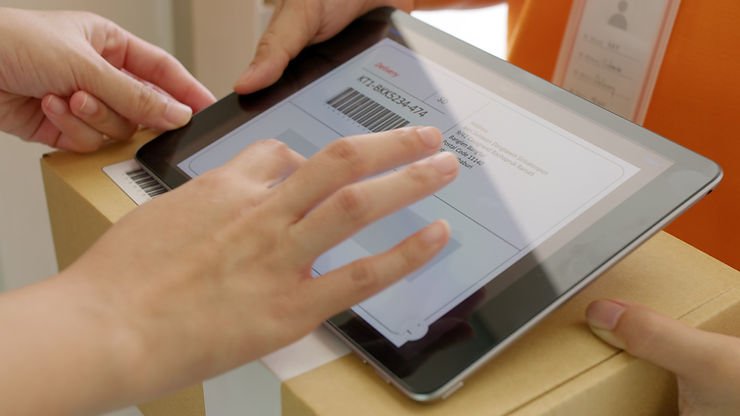The Top E-commerce Trends to Watch in 2023
- The Social Media Platform
- Video Content
- New Payment Options
- Subscription Services
- Personalization and AI-drive recommendations
- Sustainability
- Omnichannel
1. The Social Media Platform
The social media platform is very popular today in the world. This has become a necessity for the wider community in various circles, especially business people. The social media platform is typically designed to be interactive, allowing users to like, comment, and share content created by others. It also allows users to connect with other users who share similar interests, join groups or communities, and participate in conversations on a wide range of topics.
In e-commerce, social media platform has become an integral part of e-commerce, providing businesses with a powerful way to connect with customers, promote their products, and drive sales and revenue. There are several social media platforms that are commonly used for e-commerce. Here are a few examples:
- Facebook: Facebook is the largest social media platform and is widely used by businesses to connect with customers and sell products through Facebook Shops. Facebook also offers advertising options that allow retailers to target specific demographics and drive traffic to their online stores.
- Instagram: Instagram is a highly visual platform that is popular among younger audiences. Instagram has recently launched Instagram Shopping, which allows businesses to tag products in their posts and stories, making it easier for customers to purchase items directly through the platform.
- Pinterest: Pinterest is a visual search engine that is popular among users seeking inspiration and ideas. Many retailers use Pinterest to showcase their products and connect with customers through promoted pins and shoppable pins.
- TikTok: TikTok is a popular social media platform for short-form video content. Many retailers have started using TikTok to create engaging content and showcase their products to a younger audience. TikTok also offers advertising options for businesses to target specific demographics.
- YouTube: YouTube is a video-sharing platform that is commonly used by retailers to create product demos, tutorials, and other video content that showcases their products. YouTube also offers advertising options that allow businesses to target specific audiences and drive traffic to their website or online store.
Social media platforms can be a powerful tool for e-commerce retailers to connect with customers, showcase their products, and drive sales. It’s important for retailers to understand their target audience and choose the platforms that are most relevant to their business and customers.
2. Video Content

Video content is becoming increasingly popular in e-commerce as it provides a dynamic and engaging way to showcase products to customers. Here are some of the video content trends in e-commerce:
- Product demos and reviews: Many e-commerce retailers are creating video demos and reviews of their products to give customers a better sense of how the product works, looks, and feels. These videos can be posted on the retailer’s website or social media platforms and can help to build trust with customers.
- Virtual try-on: Virtual try-on technology is becoming more advanced, allowing customers to see how a product will look on them before making a purchase. Retailers can use video content to showcase virtual try-on features for products such as eyeglasses, makeup, and clothing.
- Live streaming: Live streaming allows retailers to engage with customers in real time, answer questions, and showcase products. This can be done on social media platforms such as Instagram and Facebook, or through a retailer’s own website.
- User-generated content: User-generated video content, such as product reviews and unboxing videos, can be a powerful tool for e-commerce retailers. Customers are more likely to trust the opinions of their peers, and user-generated content can help to build a community around a brand.
- Brand storytelling: Video content can be used to tell the story behind a brand, including its history, values, and mission. This can help to create an emotional connection with customers and build brand loyalty.
Video content is a powerful tool for e-commerce retailers to engage with customers, showcase products, and build brand awareness. By staying up-to-date with the latest video content trends, retailers can create compelling and effective video content that drives sales and builds customer loyalty.
3. New Payment Options

New payment options are emerging to meet the needs of both customers and retailers. Here are some of the new payment options that are likely to become more popular in 2023:
- Buy now, pay later (BNPL): BNPL options allow customers to pay for their purchases in installments over time, rather than all at once. This can make larger purchases more affordable for customers and can help retailers increase sales.
- Cryptocurrency: Cryptocurrency is becoming more widely accepted as a form of payment, with major retailers such as Tesla and Microsoft accepting Bitcoin as payment. As cryptocurrencies become more mainstream, it’s likely that more e-commerce retailers will begin accepting them as a payment option.
- Digital wallets: Digital wallets, such as Apple Pay, Google Pay, and PayPal, allow customers to store their payment information securely and make purchases quickly and easily. As more customers use digital wallets, it’s likely that more e-commerce retailers will begin accepting them as a payment option.
- Instant payments: Instant payment options, such as real-time bank transfers and instant debit card payments, allow customers to make payments quickly and securely. This can help retailers reduce payment processing times and improve the overall customer experience.
- Contactless payments: Contactless payments, such as mobile payments and contactless cards, have become increasingly popular in recent years due to their convenience and security. As more customers adopt contactless payment options, it’s likely that more eCommerce retailers will begin accepting them as payment options.
New payment options are likely to become more prevalent in e-commerce in 2023 as customers seek out more convenient and secure payment methods, and retailers look for ways to improve the payment experience and increase sales.
4. Subscription Services

Subscription services have become increasingly popular in e-commerce in recent years, and this trend is likely to continue in 2023. Subscription services offer customers a recurring delivery of products or services, often at a discounted price or with added benefits. Here are some of the ways subscription services are being used in e-commerce:
- Product subscriptions: Product subscriptions allow customers to receive recurring deliveries of a particular product, such as pet food or beauty products. This can provide convenience for customers who don’t want to have to remember to reorder the same product on a regular basis.
- Box subscriptions: Box subscriptions, such as meal kits or curated beauty boxes, provide customers with regular delivery of a variety of products. These can be customized based on the customer’s preferences and can provide a fun and exciting way for customers to discover new products.
- Membership subscriptions: Membership subscriptions offer customers access to exclusive benefits, such as free shipping, early access to sales, and member-only discounts. This can provide customers with added value and can help to build brand loyalty.
- Service subscriptions: Service subscriptions, such as online learning platforms or software subscriptions, provide customers with access to a recurring service or product. These can provide convenience for customers who need access to a particular service on an ongoing basis.
Subscription services offer a way for e-commerce retailers to provide recurring value to customers, increase customer loyalty, and generate recurring revenue. By offering customized and personalized subscription options, retailers can provide customers with a convenient and valuable shopping experience.
5. Personalization and AI-driven recommendations

Personalization refers to tailoring the shopping experience to individual customers based on their preferences, purchase history, and behavior. It can be achieved through various methods such as personalized emails, product recommendations, and targeted promotions.
AI-driven recommendations, on the other hand, are powered by algorithms that analyze customer data such as browsing and purchase history to suggest products or services that they may be interested in. These recommendations can be made across various channels, including email, websites, and mobile apps. The benefits of personalization and AI-driven recommendations in retail are numerous. Here are a few examples:
- Increased customer engagement: Personalization and AI-driven recommendations help retailers connect with customers on a more personal level, which can increase customer engagement and loyalty.
- Higher conversion rates: By tailoring the shopping experience to individual customers, retailers can increase the likelihood of a purchase, leading to higher conversion rates.
- Improved customer satisfaction: When customers receive personalized recommendations that meet their unique needs and preferences, they are more likely to be satisfied with their shopping experience.
- Better use of data: Retailers can use the data collected from customer interactions to continually improve their recommendations, leading to better insights into customer behavior and preferences.
Personalization and AI-driven recommendations are essential components of an omnichannel retail experience. They can help retailers improve customer engagement, conversion rates, and satisfaction, while also making better use of the data they collect.
6. Sustainability

Sustainability with eco-friendly practices is becoming increasingly important for retailers, as consumers are becoming more aware of their environmental impact and are seeking out businesses that prioritize sustainability.
In the retail industry, sustainable and eco-friendly practices can take many forms, such as using recycled materials in packaging, reducing waste, sourcing products from sustainable suppliers, and implementing energy-efficient practices in stores and warehouses. There are several benefits to implementing sustainable and eco-friendly practices in retail, including:
- Improved brand reputation: Retailers that prioritize sustainability and eco-friendliness can enhance their brand reputation, as consumers are more likely to support businesses that align with their values.
- Cost savings: Sustainable and eco-friendly practices can lead to cost savings for retailers in the long run, as they can reduce waste and energy consumption, and optimize supply chains.
- Increased customer loyalty: Consumers are becoming more conscious of their environmental impact and are seeking out retailers that prioritize sustainability. By implementing sustainable and eco-friendly practices, retailers can increase customer loyalty and attract new customers.
- Positive impact on the environment: Sustainable and eco-friendly practices in retail can contribute to reducing the environmental impact of the industry, including reducing greenhouse gas emissions, minimizing waste, and preserving natural resources.
Sustainability with eco-friendly practices is an essential aspect of the modern retail industry. By implementing these practices, retailers can improve their brand reputation, save costs, increase customer loyalty, and make a positive impact on the environment.
7. Omnichannel

An omnichannel strategy is all about creating a unified shopping experience for customers, regardless of the channel they use to engage with the brand. This means that a customer can start a transaction on one channel and finish it on another without any hiccups. Some benefits of an omnichannel retail experience include:
- Improved customer experience: Omnichannel retail provides a seamless and consistent customer experience across all touchpoints. Customers can shop online, in-store, or through a mobile app with ease, which can lead to increased customer loyalty and satisfaction.
- Increased sales: By providing multiple channels for customers to shop, retailers can increase their sales potential. Customers may prefer to shop through a specific channel, and by offering multiple options, retailers can capture a wider audience.
- Better data collection and analysis: By integrating all channels, retailers can collect data on customer behavior across multiple touchpoints. This can help retailers better understand their customers and make data-driven decisions to improve their business.
An omnichannel retail experience is all about creating a seamless, cohesive, and personalized shopping experience for customers across multiple channels. It can lead to increased customer loyalty, improved sales, and better data collection and analysis for retailers. Making your brand grow is always a dream in your life. Join us to make it real!

